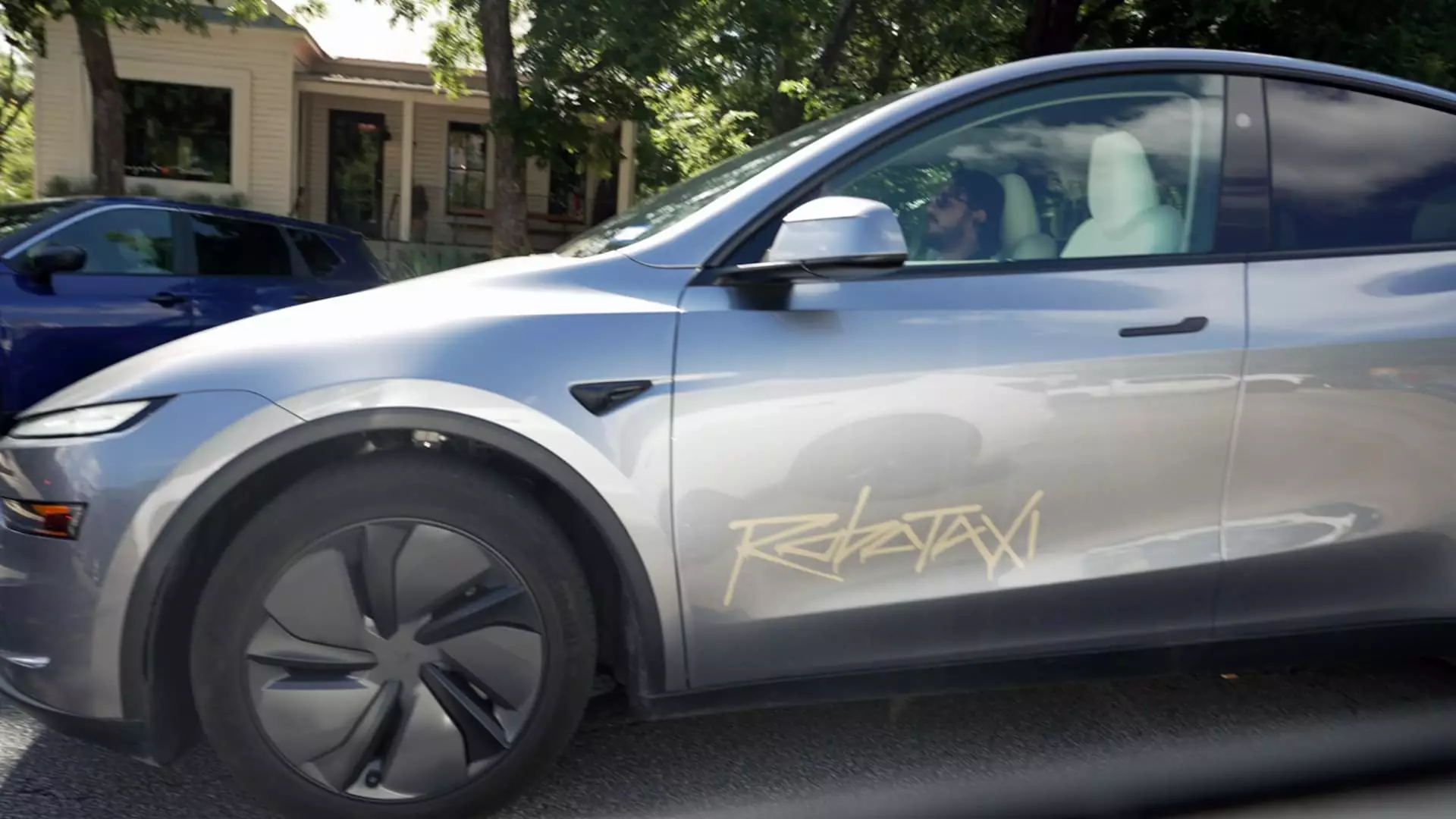Tesla’s pursuit of autonomous vehicles, specifically Robotaxis, exemplifies a potent mix of innovation and hubris. Elon Musk’s vision of a world where self-driving cars revolutionize urban mobility has been driven by lofty promises. Yet, the reality on the ground paints a much murkier picture. Tesla’s recent attempts to deploy Robotaxis in Phoenix and Austin are as much about perception and brand positioning as they are about technological readiness. While Musk touts camera-based systems as a cost-effective alternative to lidar, the implementation on the streets reveals ongoing safety concerns and technological shortcomings that threaten to undermine public trust.
The Flawed Narrative of Superiority
Tesla’s strategy of eschewing expensive sensors in favor of an autonomous vision primarily reliant on cameras and AI has garnered both admiration and skepticism. The company’s narrative that this approach will make Robotaxis more affordable and scalable is compelling. However, it blatantly underestimates the complexity of real-world environments, especially in urban settings rife with unpredictable obstacles, intricate traffic patterns, and diverse weather conditions. Time and again, incidents—ranging from minor mishaps like door dings to questionable navigation decisions—highlight the gap between Tesla’s bold claims and the pragmatic demands of safe autonomous operation.
Regulatory and Ethical Quagmires
Tesla’s rapid expansion trajectory intersects dangerously with regulatory skepticism. Despite Musk’s optimistic timelines—such as the potential launch in California or deployment in Phoenix—the company faces mounting scrutiny from authorities like the NHTSA and California DMV. Past incidents and dubious safety claims, such as the lawsuit alleging false advertising, cast a long shadow. There is an urgent need for stricter oversight to ensure that the rush to commercialize does not compromise passenger safety or gloss over unresolved technological flaws. Moreover, the ethics of deploying vehicles that are still in a semi-developing phase raise serious questions about consumer protection and accountability.
The False Confidence of “Automation First”
Tesla’s unwavering belief that its cameras and neural network-driven systems can replace the nuanced judgment of human drivers is reminiscent of a dangerous overconfidence. While Musk’s vision might inspire innovative leaps, it dangerously downplays the complexity of autonomous decision-making. The instances caught on social media—vehicles hitting parked cars or violating traffic rules—are clear indicators of systems that are not yet mature. Yet, Tesla continues to portray its Robotaxis as ready for mainstream deployment, arguably fueled by investor optimism and brand prestige more than concrete safety metrics.
A Critical Theater of Trust and Public Perception
The broader societal impact of Tesla’s push into autonomous taxis is profound. Public trust in self-driving technology hinges on consistent safe performance. Tesla’s approach—showcasing videos of near-misses and promising rapid deployment—risks creating a narrative that it is “ready now” when it is undeniably not. At stake is not just regulatory approval but the future legitimacy of autonomous mobility. If these vehicles continue to operate with unresolved safety issues, the fallout could erode confidence not only in Tesla but in the entire autonomous vehicle industry. As a center-leaning liberal, I believe that responsible innovation demands patience, transparency, and rigorous safety standards, rather than the allure of headlines and market dominance.
Tesla’s ongoing efforts embody a Silicon Valley form of bravado—believing that technological breakthroughs are just around the corner and that regulatory hurdles are mere formalities. Yet, the road to fully autonomous, safe, and reliable Robotaxis remains long and fraught with challenges that Musk’s narrative often overlooks. A more grounded approach prioritizing safety over speed, humility over hype, and thorough testing over rapid deployment would serve both consumers and society better in the long run.

